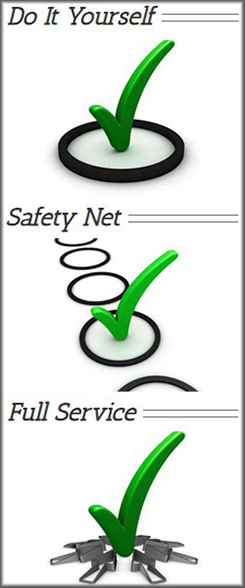Customer Measurement Problem 12
FAILING TO LEVERAGE AVAILABLE TECHNOLOGY
Jump To Page – Intro, 1, 2, 3, 4, 5, 6, 7, 8, 9, 10, 11, Conclusion
 It is hard to emphasize enough the high value of organizational customer data use as enabled by advanced technological systems. While CRM systems have taken a beating in trade publications for their apparent failures in producing returns on massive investments, some companies are having great success leveraging technological tools in their customer measurement and management processes. Perhaps some of this is less an issue of ineffectiveness and more an issue of diffusion of innovation. Some companies may have been early adopters of customer information systems, seeing the potential promise and power in CRM, yet struggled practically thereafter to extract all the potential value inherent in the tools. But when it comes to the use of technology as an accelerator in the effective use of customer measurements, some companies have ramped up quickly and are realizing tremendous customer-level gains because of this technological enablement.
It is hard to emphasize enough the high value of organizational customer data use as enabled by advanced technological systems. While CRM systems have taken a beating in trade publications for their apparent failures in producing returns on massive investments, some companies are having great success leveraging technological tools in their customer measurement and management processes. Perhaps some of this is less an issue of ineffectiveness and more an issue of diffusion of innovation. Some companies may have been early adopters of customer information systems, seeing the potential promise and power in CRM, yet struggled practically thereafter to extract all the potential value inherent in the tools. But when it comes to the use of technology as an accelerator in the effective use of customer measurements, some companies have ramped up quickly and are realizing tremendous customer-level gains because of this technological enablement.
Consider how some of the best companies in the world are now collecting, analyzing, distributing, and providing access to feedback from customers at the individual customer/account level. Customer contact information, including e-mail addresses, resides in a system. Companies choose periodic or event-based triggers to launch web-based surveys to individual customers. Customers in effect enter their own data, such that it becomes immediately available to the organization. An option is given asking customers whether or not they approve of having their name associated with the responses they just provided. Whenever the answer is yes, account managers can immediately see a spectrum of relevant ratings from that particular customer. The data are accessible online, from anywhere at any time.
If there are low ratings, or problems, the system can automatically alert the customer/account manager. Discovery of negative open-ended comments might also call for individual customer follow up. A customer/account manager also can devise a more elaborate plan for repair, recovery, or remediation. In fact the plan can be entered into the system, with specific action steps, dates, names etc., built in. Then the tool is serving not only the customer information purpose, but also acts as a “close-the-loop” enabler and a customer-driven project/task management system. Further, the system is accessible by supervisors who can ensure accountability in executing customer/account specific plans.
Basic descriptive analytic capabilities also exist in many of these systems so that data across customers can be analyzed at almost any level, by segment, by region, based on responses or response patterns, and so on. Qualitative open-ended data exists as text, entered by the respondent in the online survey process, and searchable across customers by keywords, or patterns of text association. Graphs and other reporting tools are built into the systems such that a person mining the data can post or “push” particular reports to other intra-organizational contacts (a directory of whom also can be housed within the system for extremely easy creation of custom distribution lists).
Far beyond the historic practices of customer measurement programs – e.g., paper surveys, manual data entry, long data processing times, reams of cross-tabulations, thick binder reports, lack of actionability and accountability, lack of flexibility for information users to analyze data, and many other aspects of traditional program execution technological advancements have taken customer measurement to another level. And these are not pie-in-the-sky ideas. Systems with the capabilities described do exist and are being effectively used by companies even as I write this paper. Clearly technological advances are taking the state of practice in customer measurement and management in powerful, highly effective directions.
Available technological systems also help to solve problem eleven as outlined previously. As customer measurement processes become more automated and advanced, the ability increases to get systems to talk to other systems, to exchange data across platforms, and to warehouse massive amounts of customer data in common locations. As that kind of desired data sharing becomes more and more possible through technological means, the ability to integrate data streams as described earlier becomes an especially pragmatic reality.
Unlike some of the other problems mentioned, this twelfth area is indeed already in play at a number of major companies. Customer data in systems like the one described also offers access to a much broader set of organizational players than ever before. Many people are getting access to, and use of, distributed voice-of-customer data from locations around the globe, 24 hours a day seven days a week.
This issue in particular is largely one of speed of technological adoption. Early on as we are, many organizations still have not put into place, or realized the power of, the kind of technological systems I’ve described. But for those early adopters who have put such systems into place, the results are impressive. Because of the power of these technological tools, some companies are gathering, accessing, analyzing, distributing and using customer information in ways not imagined even a handful of years ago.




